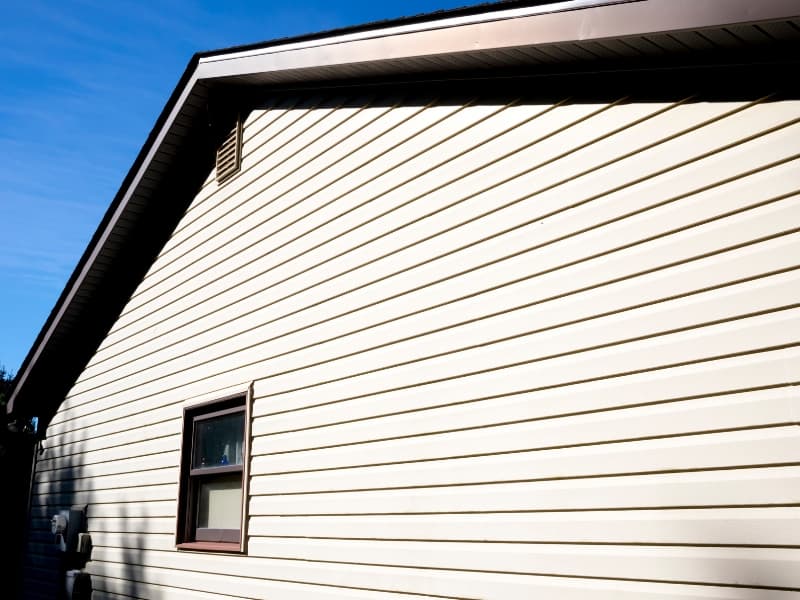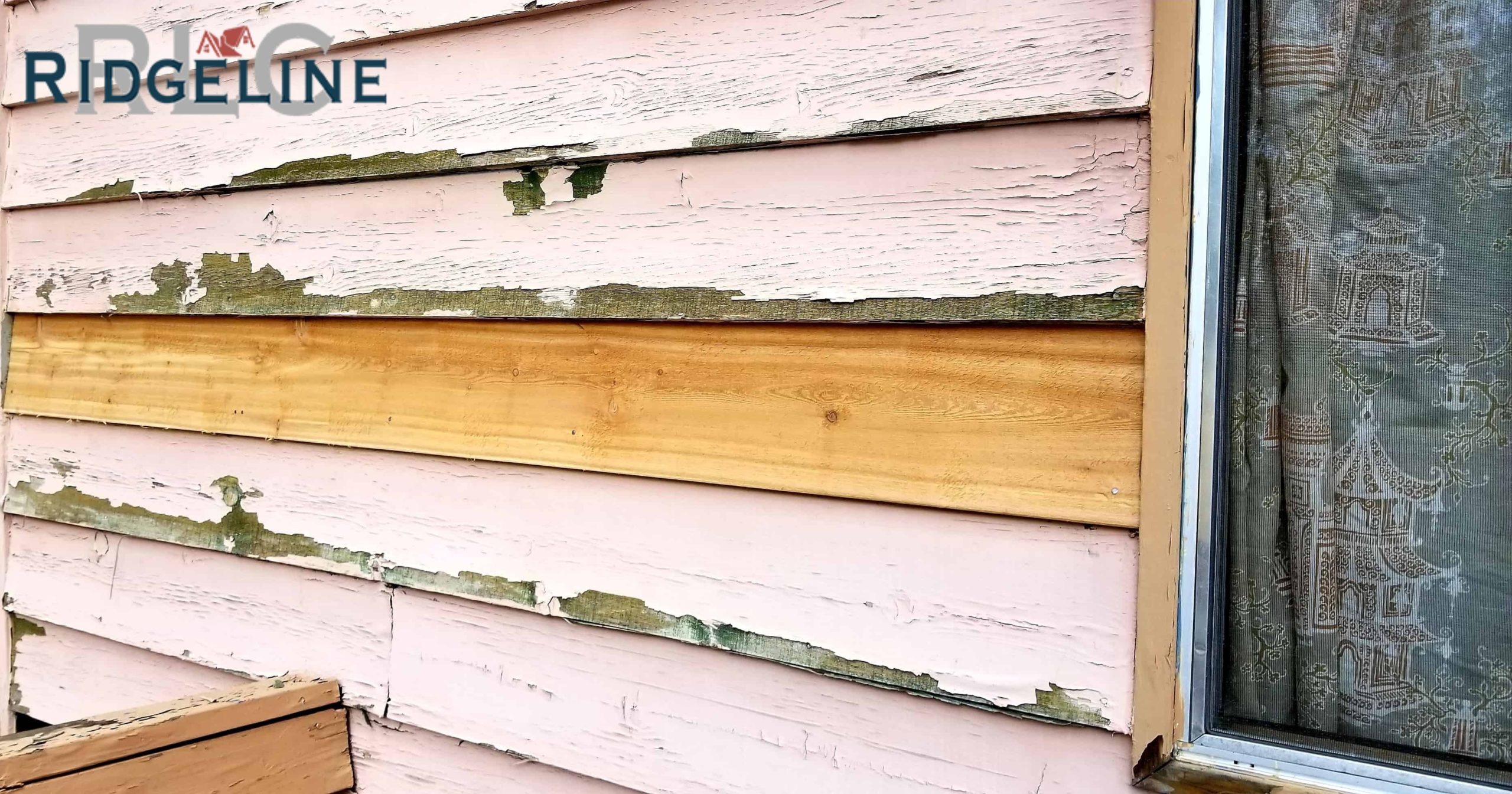If you are a homeowner of a house with vinyl siding, you have more than likely asked yourself the question “Can I paint my siding?” This can be a very long answer but to make it short, yes, you can paint your vinyl siding. Here are a few things you need to know when considering taking on this project.
Understand the Cost
Painting your vinyl siding is something that is not a small project and needs lots of careful consideration before doing it. One thing you should keep in mind is the cost of painting your vinyl siding versus re-siding your home. The average cost of painting a house is around $3,000 while re-siding in a house can cost around $10,000. This is something you should be aware of, along with other aspects like maintenance of the new and old siding.
Know Your Siding Warranty
When you get vinyl siding, it normally comes with some sort of warranty. If you paint your vinyl siding, this could cancel the warranty, which would be very important to know. So, if you are considering painting your siding, you need to make sure you know your warranty details. If you no longer have a warranty in place or do not care about it, painting your siding could be the best move for you.
Do it Right
If you use quality paint and do a good job when painting your siding, this could be a great success. On the other hand, if you use cheap paint and do a poor job, this could be very bad for your siding and the way it looks. There can be all kinds of peeling as well as it will not be doing a good job of protecting your home. This is very important and can save you years of repainting if it is done correctly the first time. Once you paint your siding, you will have to re-paint it every few years to keep it looking fresh.
Pick the Right Color
Be sure that you pick the right color when you are painting your vinyl siding. There are special paints that are created for this exact project that you need to be using. Depending on the color that you pick, this can possibly cause damage to the siding if it is getting too hot or cold. You should always try to pick a color that is similar to the current color of your vinyl siding.
Pros and Cons of Painting Your Vinyl Siding
Painting your vinyl siding is often considered a low-cost, easy way to increase the visual appeal of your home’s exterior. While many homeowners are considering this option, it’s important to weigh the pros and cons before starting a project of this type.
Pros:
One of the primary advantages of painting vinyl siding is that it helps you create a unique look for your home’s exterior. Whether you’re looking for a deep, dramatic color like navy blue or a light pastel hue like yellow or gray, painting can help you achieve the aesthetic you want. The painting also provides an additional layer of protection by helping to guard against moisture damage and UV fading caused by intense sunlight. Additionally, paint can cover up any existing dings, cracks or other discolorations on your siding that might not be removable with conventional cleaning methods.

Cons:
While painting vinyl siding may offer particular advantages, it also comes with some drawbacks. The main disadvantage is that if the job isn’t done properly, paint can start to peel away within a few years due to a lack of proper preparation and application technique. Another issue is that if you don’t use an appropriate primer first, the color won’t adhere properly and may appear blotchy or uneven after drying. Furthermore, depending on the type of paint used and where you live, some paints may be more prone to mold and mildew growth than others, requiring frequent maintenance to prevent further damage.
Overall, painting your vinyl siding can be an excellent option for those who want to give their homes an updated look without spending too much money on replacement materials. However, because there are quite a few potential pitfalls associated with painting such as improper preparation or inadequate priming techniques – it’s important that anyone considering taking on such a project researches thoroughly beforehand to ensure they end up with professional-looking results.
Potential Challenges of Painting Your Vinyl Siding
Painting your vinyl siding can be an attractive and cost-effective way to give a home’s exterior a facelift. However, as with any project, painting your vinyl siding has its challenges that are important to consider before embarking on the project. Some potential challenges include difficulty prepping the surface, selecting the right paint and primer for vinyl siding, applying the paint evenly and without runs or drip, cleaning and maintaining painted vinyl siding, and avoiding any potential issues due to environmental factors like weather.
- Prepping the Surface
Surface preparation is one of the most critical steps in painting your vinyl siding. The first step is to clean the siding thoroughly with a pressure washer or garden hose. Any dirt, mildew, or other debris must be removed so that the paint adheres properly. After all visible dirt and grime have been removed from the surface, it must be completely dry before any paint can be applied. Next, you may need to use a special detergent specifically designed for cleaning vinyl siding if there is still dirt present after washing. Additionally, any old caulk around windows and door frames should be removed and replaced with new caulk prior to painting.
- Selecting the Right Paint and Primer for Vinyl Siding
Another challenge associated with painting your vinyl siding is selecting the right type of paint and primer that will adhere properly to the material while lasting through various weather conditions throughout the year. For example, oil-based paints are not recommended because they do not adhere well to vinyl siding; water-based latex paints should be used which adhere better to vinyl surfaces while also allowing moisture vapor to pass through which prevents blistering or peeling of paint over time. A primer specifically designed for exterior surfaces made from plastic should also be used before painting with latex paints to ensure proper adhesion of primer and paint layers overtime on this type of material.
- Applying Paint Evenly Without Runs or Drips
Painting your vinyl siding requires applying multiple coats of paint evenly across both vertical and horizontal surfaces without leaving behind streaks or runs in either direction; paints labeled “self-leveling” are best suited for this task as they are formulated specifically for application on vertical surfaces like walls where there is no danger of runs or drips forming during application due to gravity pulling down on wet paint spots too quickly before even drying takes place. The key here is patience: take your time when applying each coat evenly for a professional finish that does not require extensive touch-ups later on down the line due to uneven coverage during initial application rounds.
- Cleaning & Maintaining Painted Vinyl Siding
It’s not just enough that you’ve prepped the surface correctly before painting your vinyl siding – proper maintenance needs occur after painting as well for painted surfaces to remain looking good over long periods without chipping or fading prematurely due to exposure from harsh weather conditions such as sunlight or rain drops falling onto already painted areas causing discoloration or other negative effects such as mildew growth if left unchecked regularly over extended periods of time post-painting job completion date. Regular washing using soft cloths saturated with water mixed with mild soap solution helps extend the life span of painted surfaces while also keeping them looking clean at all times; additionally regularly checking caulking seams around windows/door frames helps make sure they remain airtight so that no outside elements can penetrate through into interior spaces via these entry points leading up premature peeling off caused by moisture seeping through cracks within these sealed off areas before reaching their intended target level (i.e., inside walls).
- Potential Issues Due To Environmental Factors Like Weather
When preparing for a painting project involving outdoor surfaces like those found on vinyl sidings it’s essential to consider what kind of environmental conditions you will encounter beforehand, such as windy days which hinder proper drying times between coats being applied leading up to eventual chipping away from strong gusts blowing against freshly painted walls – likewise extreme temperatures (too cold/hot) may cause problems related adhesion resulting white spots formulating around edges where warmer / lower temperatures were experienced respectively compared rest surrounding areas due direct contact exposure either heat source (sunlight) cold fronts passing through area depending upon season changes taking place.

Painting your vinyl siding is a project that can be done but needs to be carefully considered before taking on this task. If you have any questions about repairing or replacing vinyl siding, the professionals at Ridgeline Construction Roofing & Exteriors would be happy to help.








